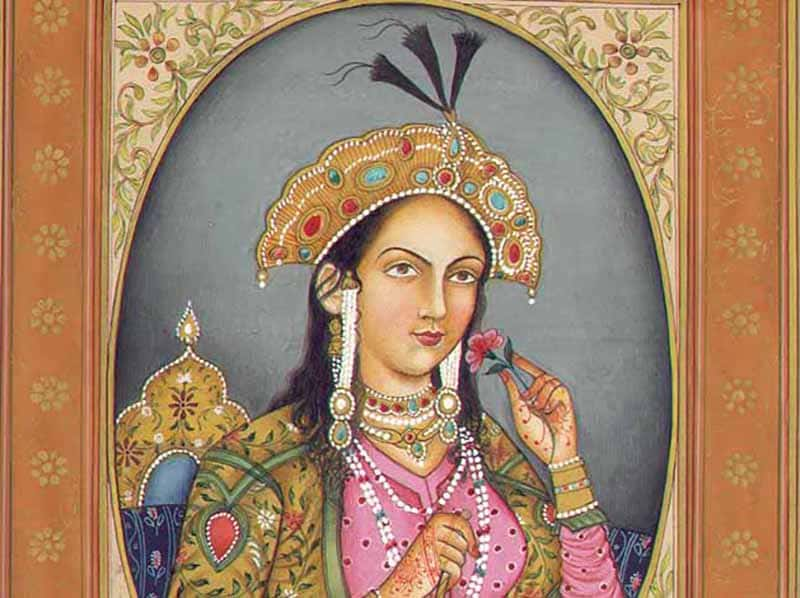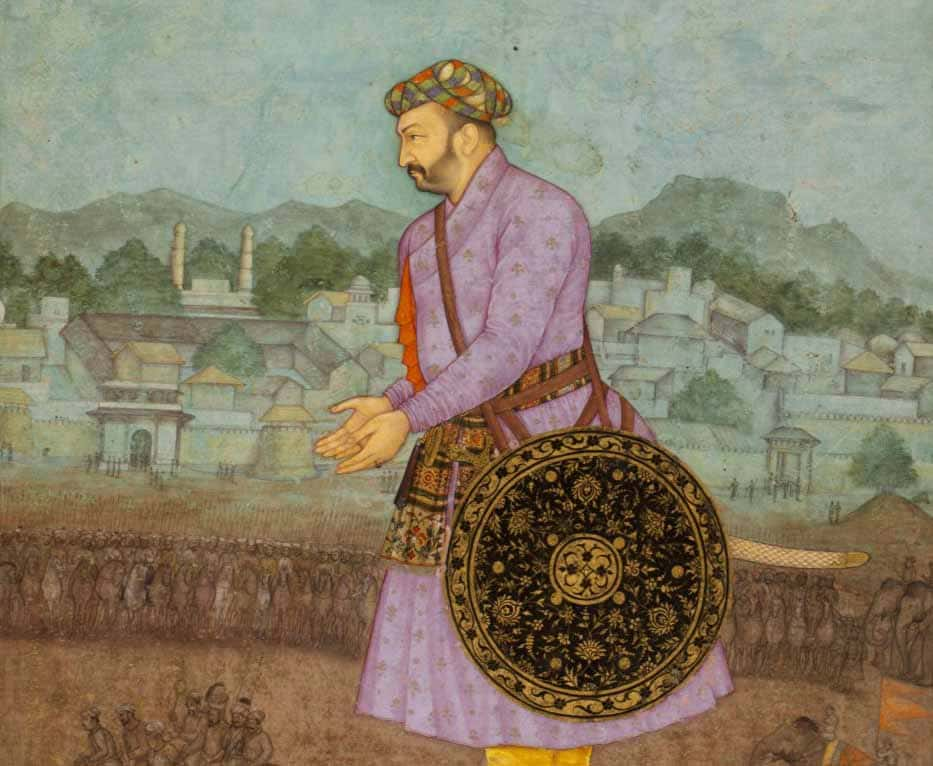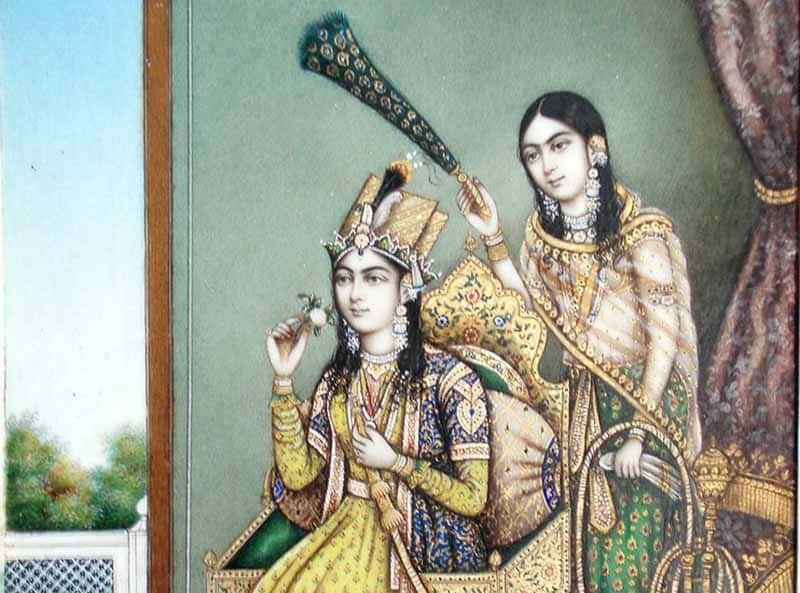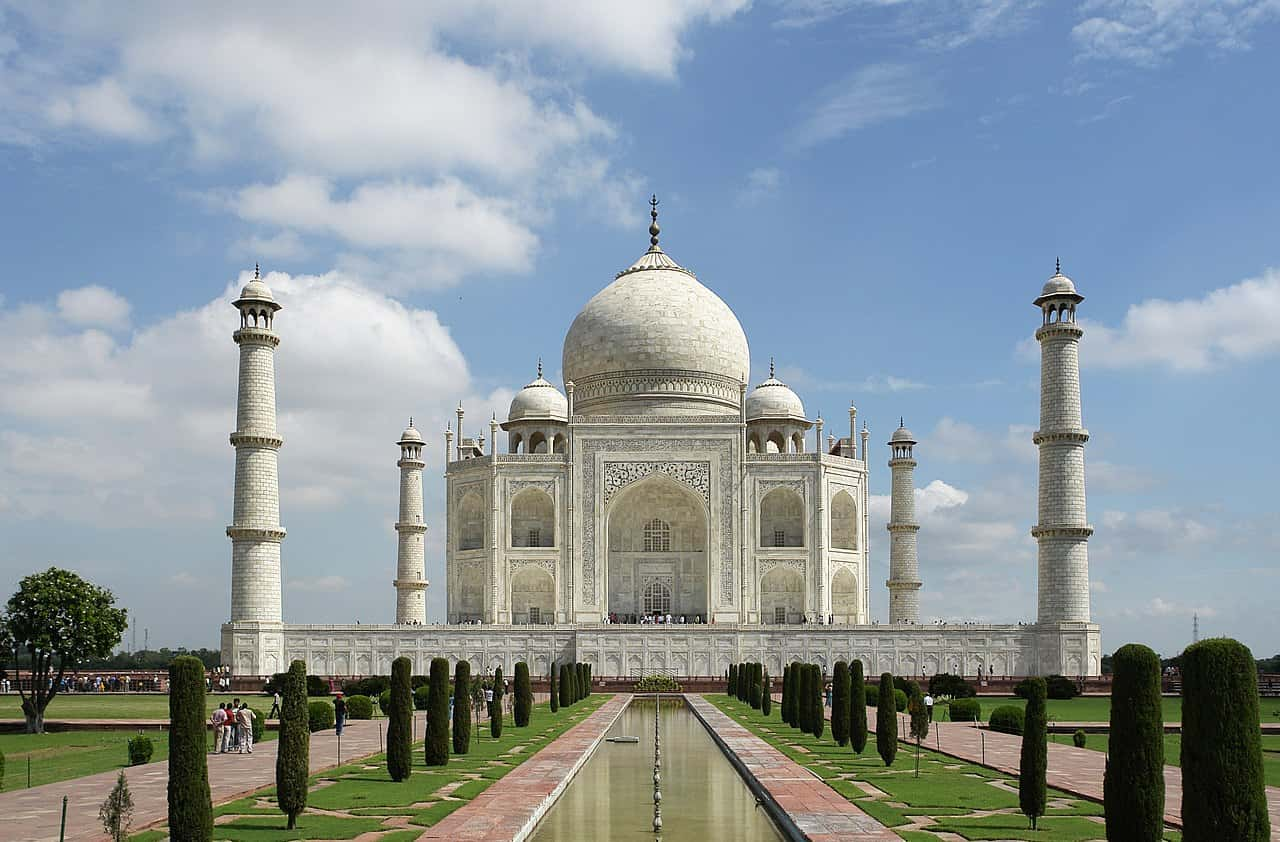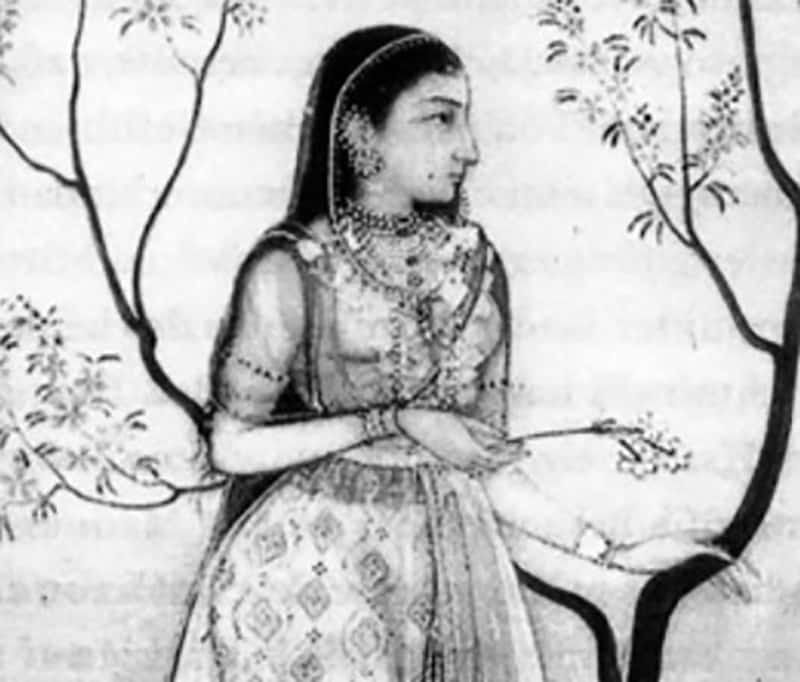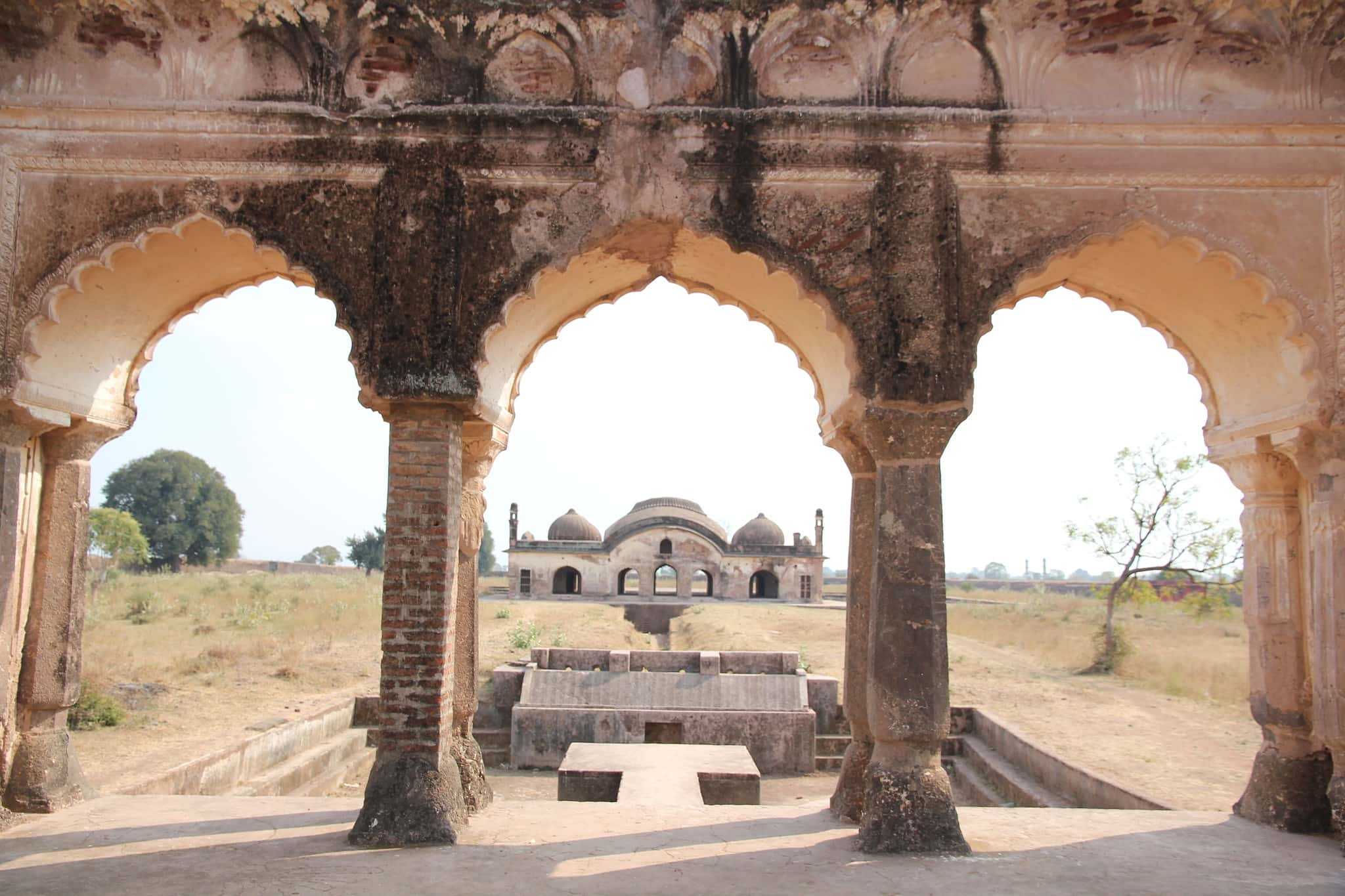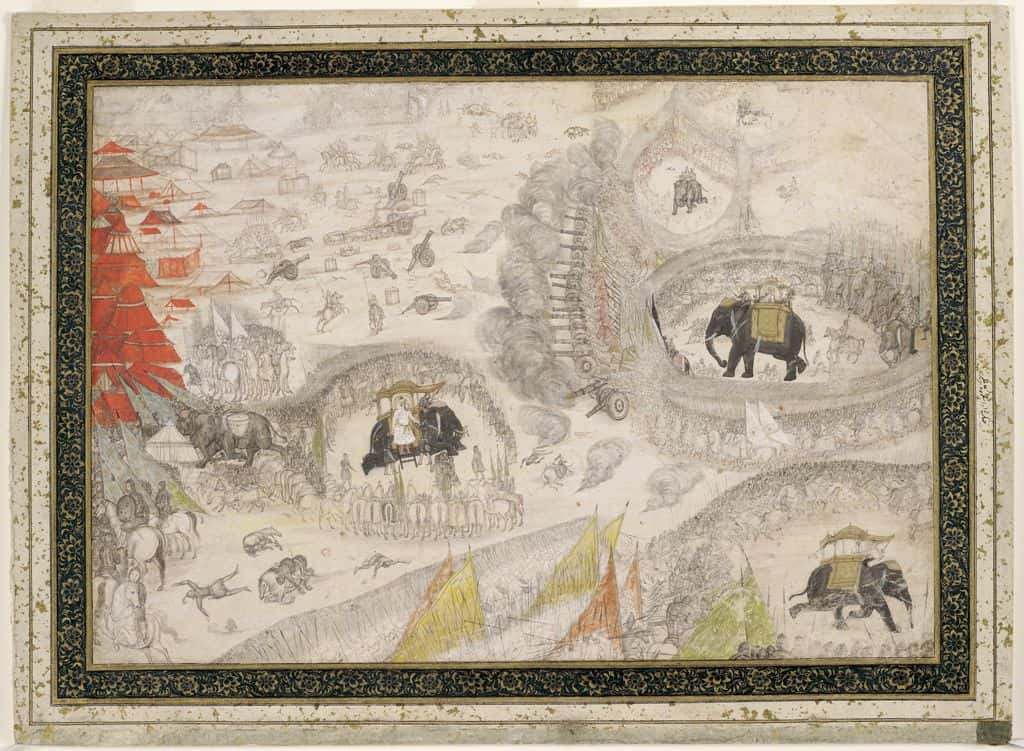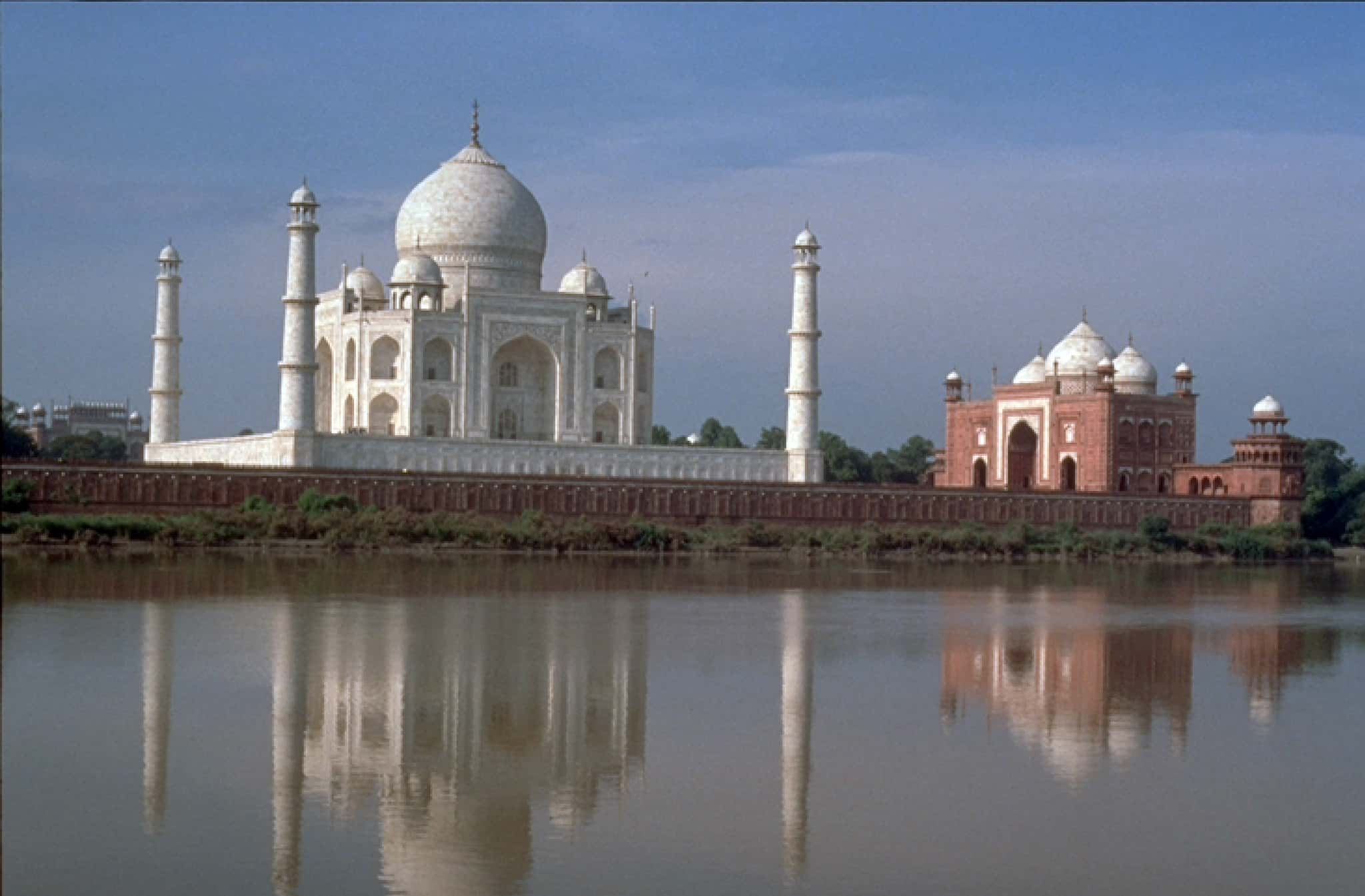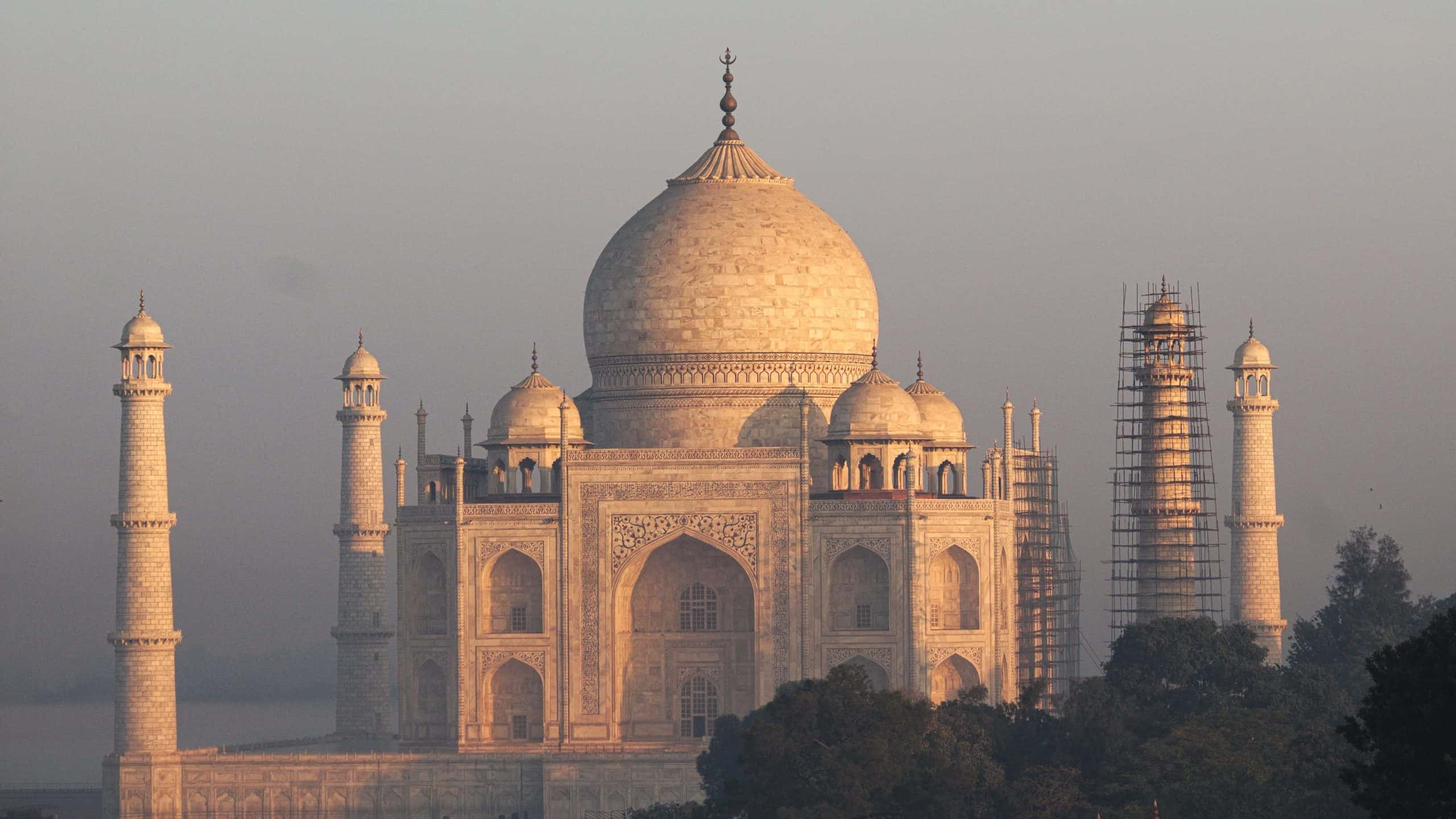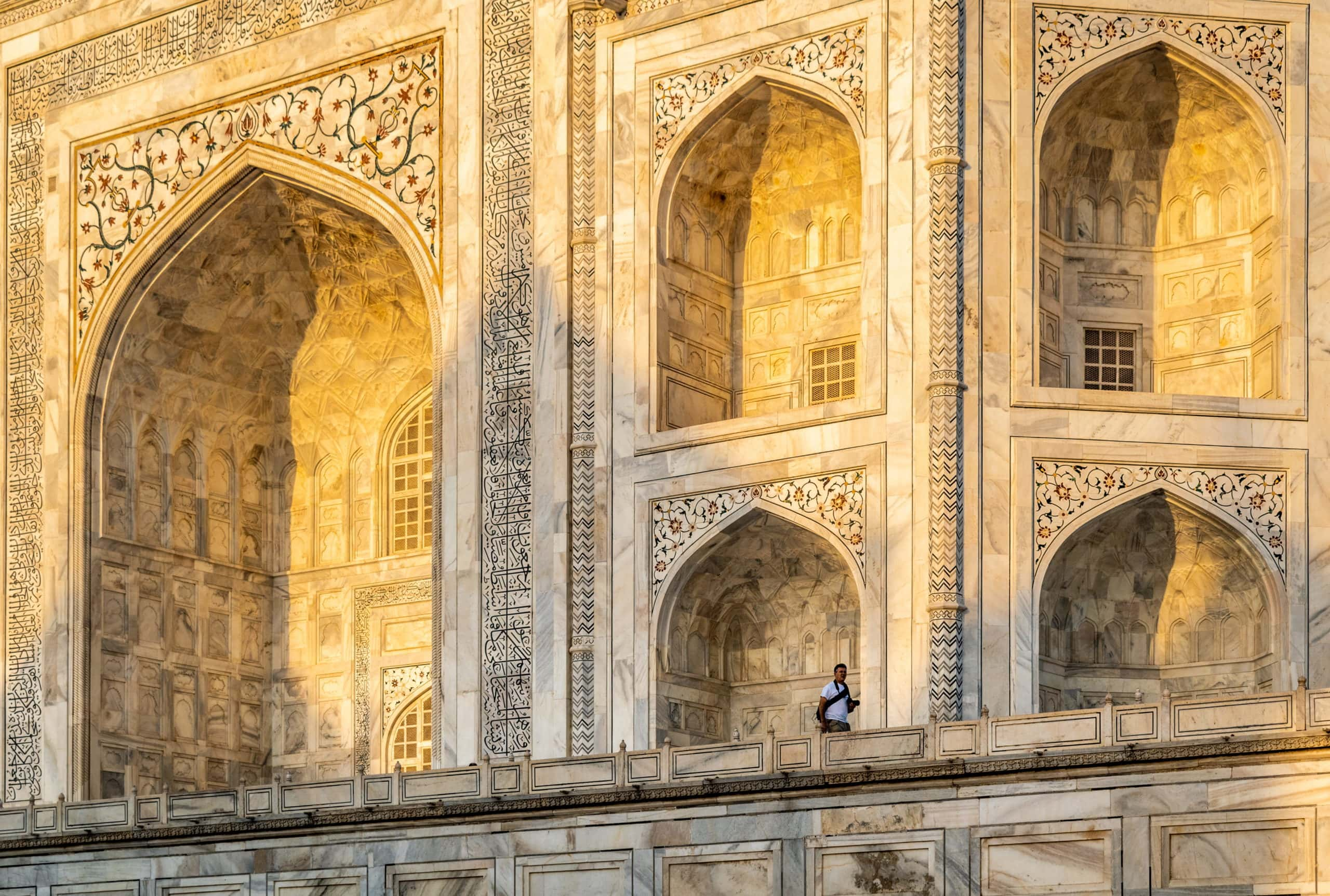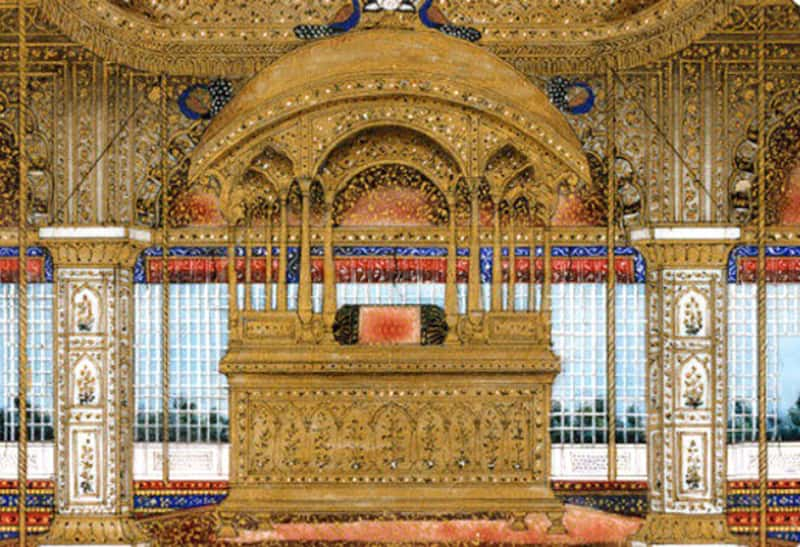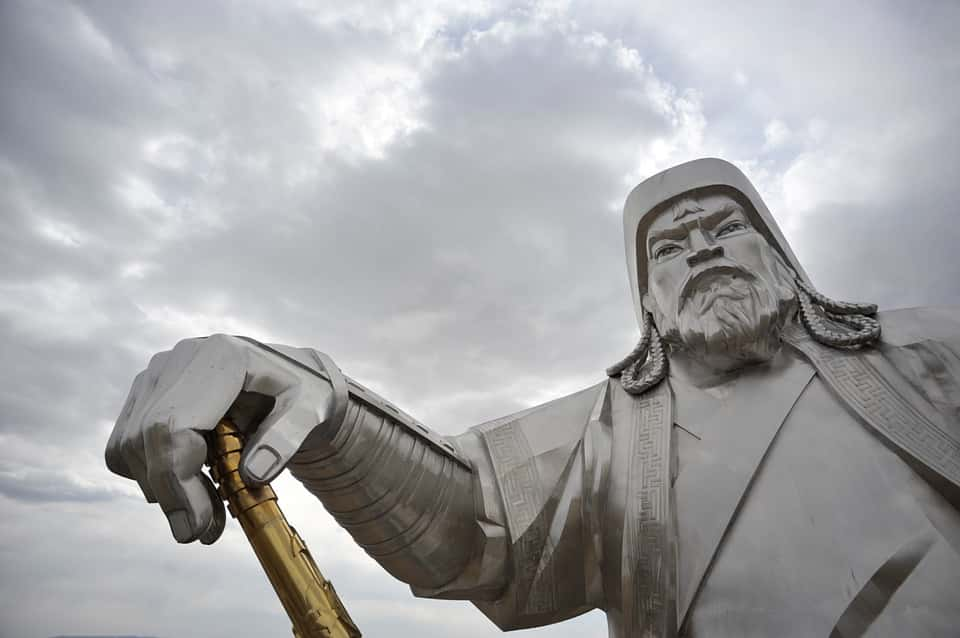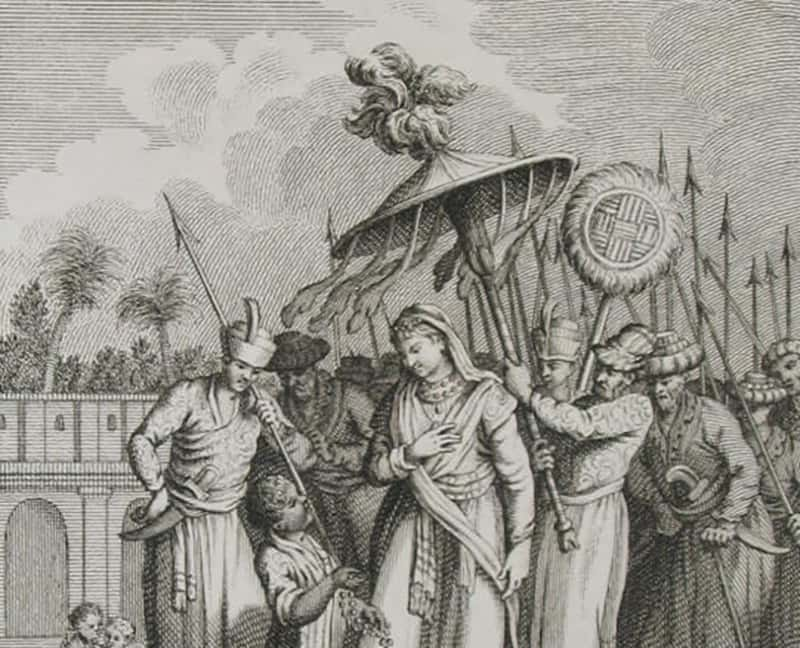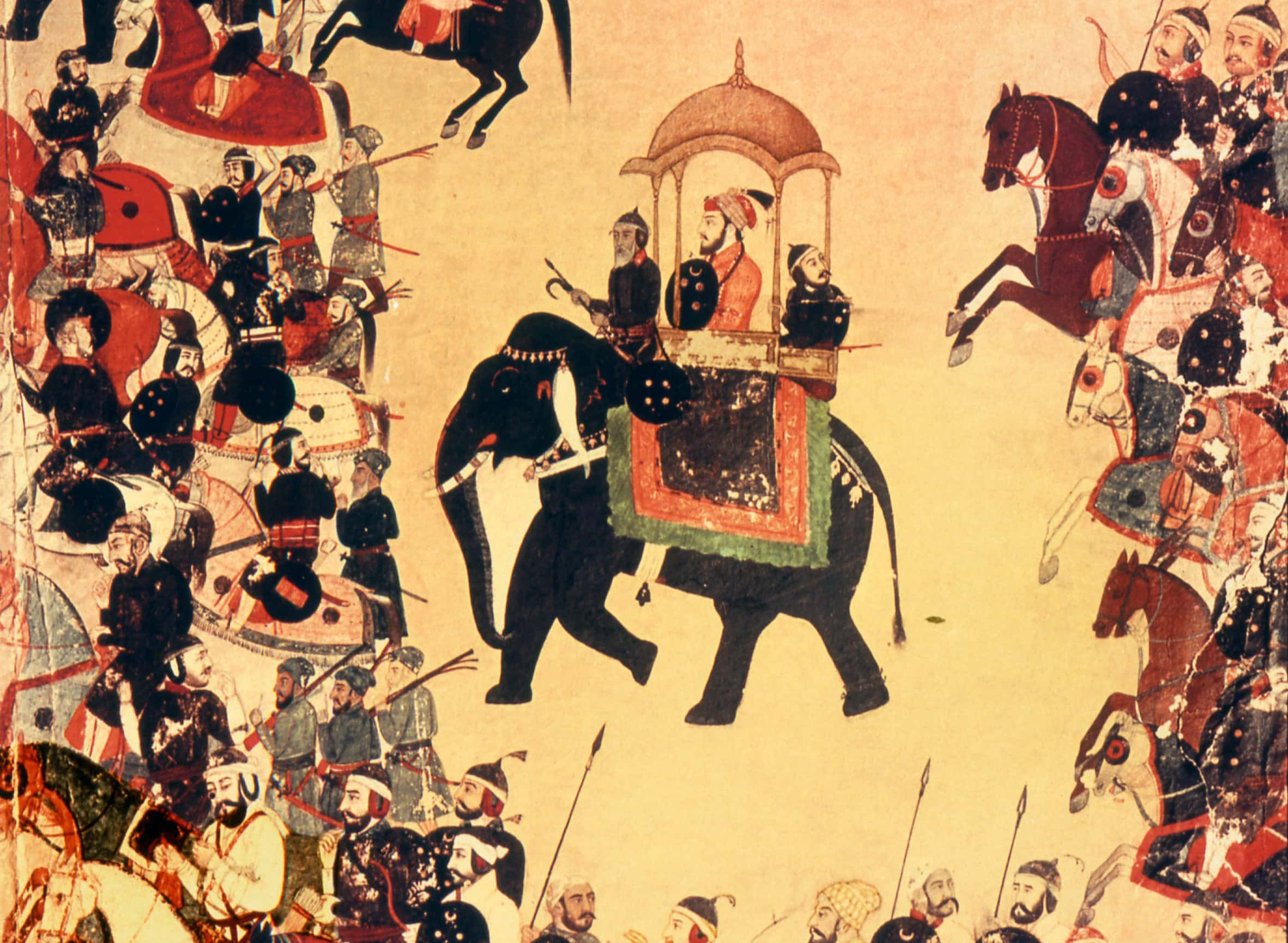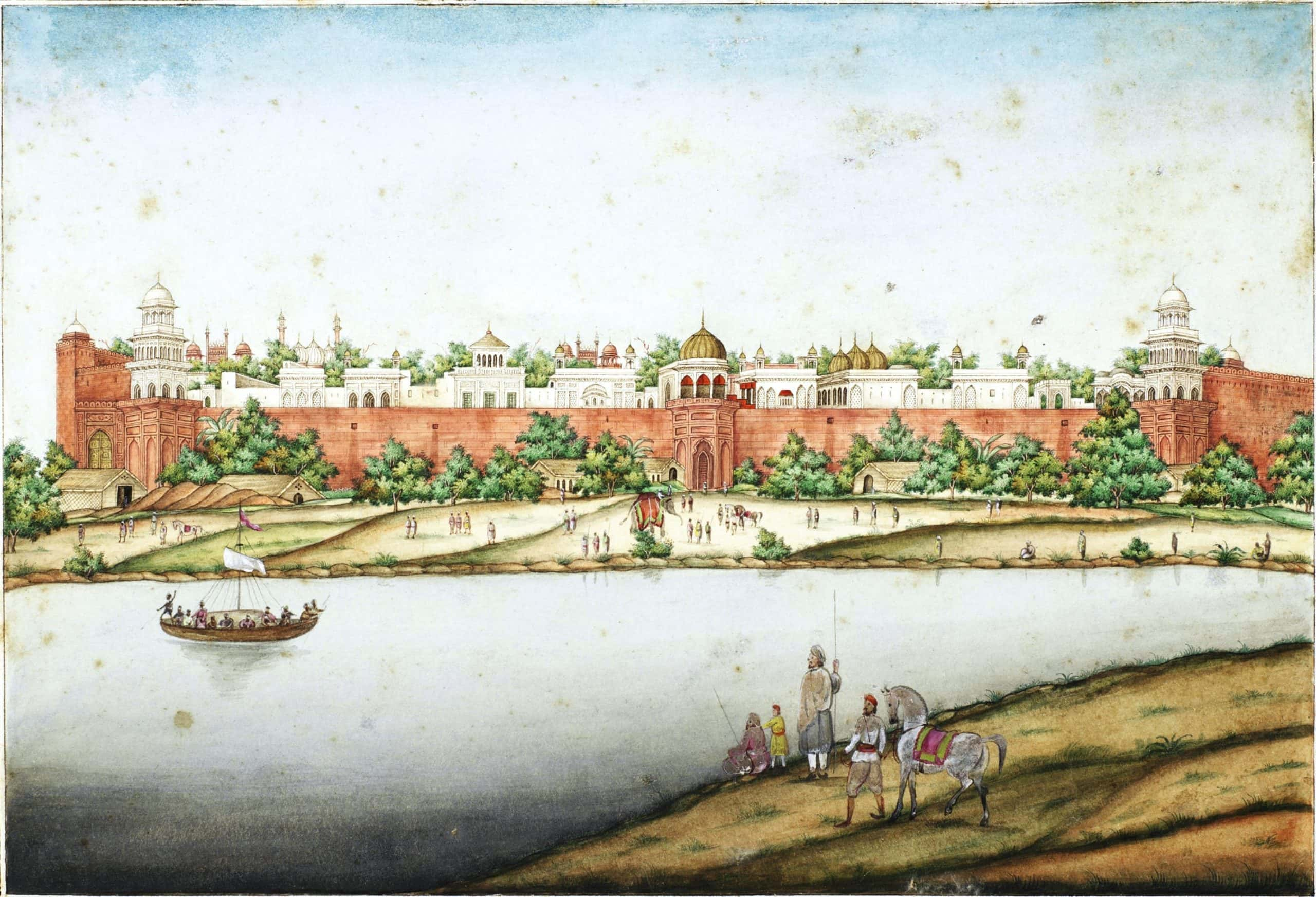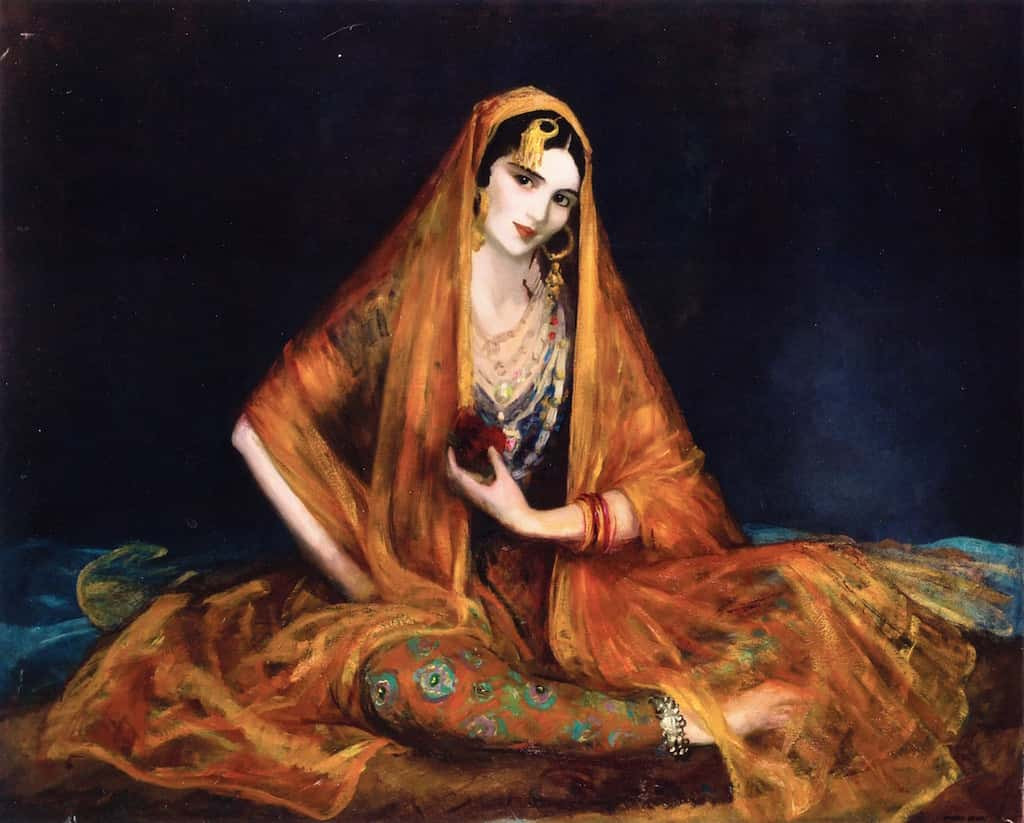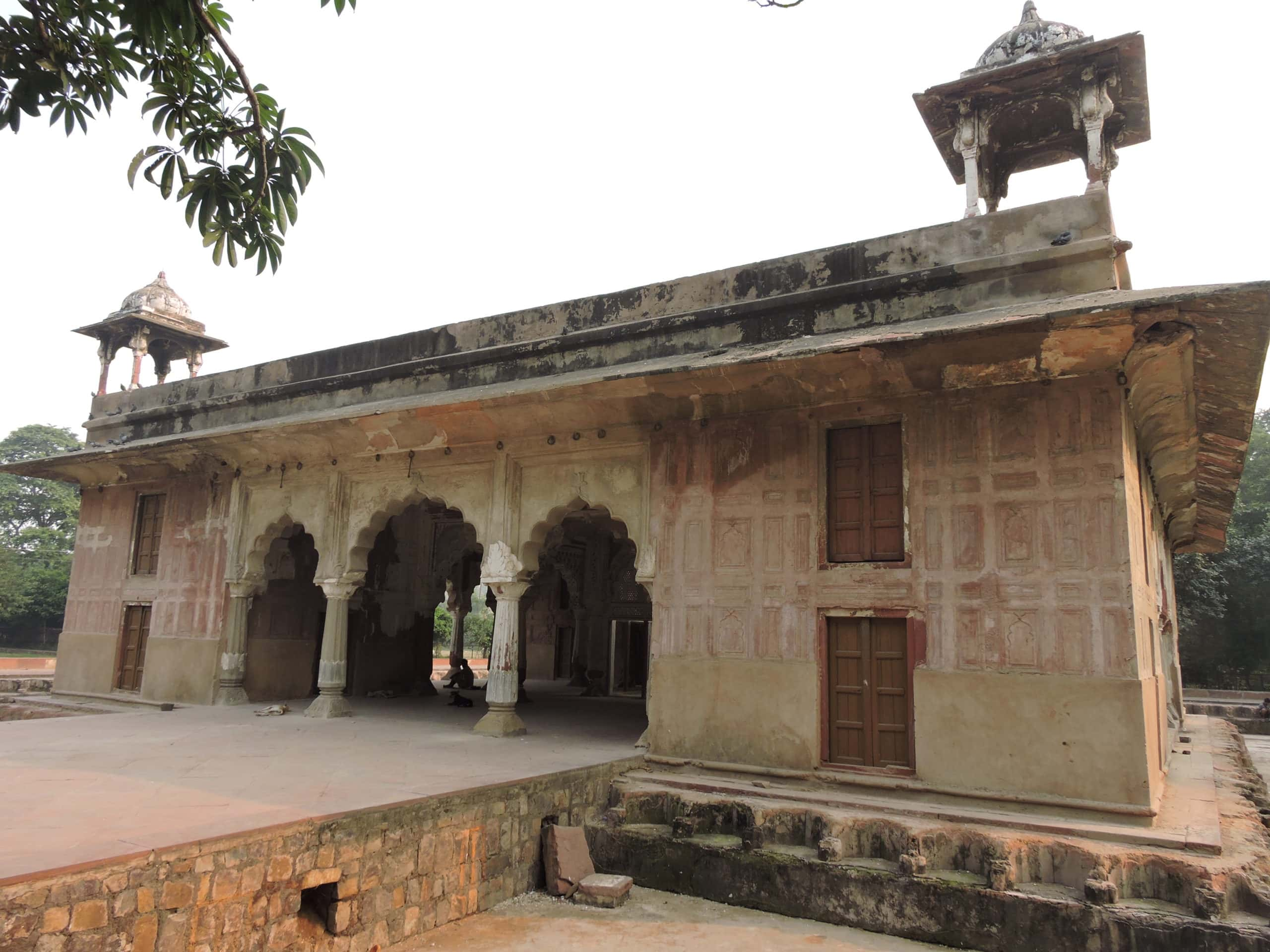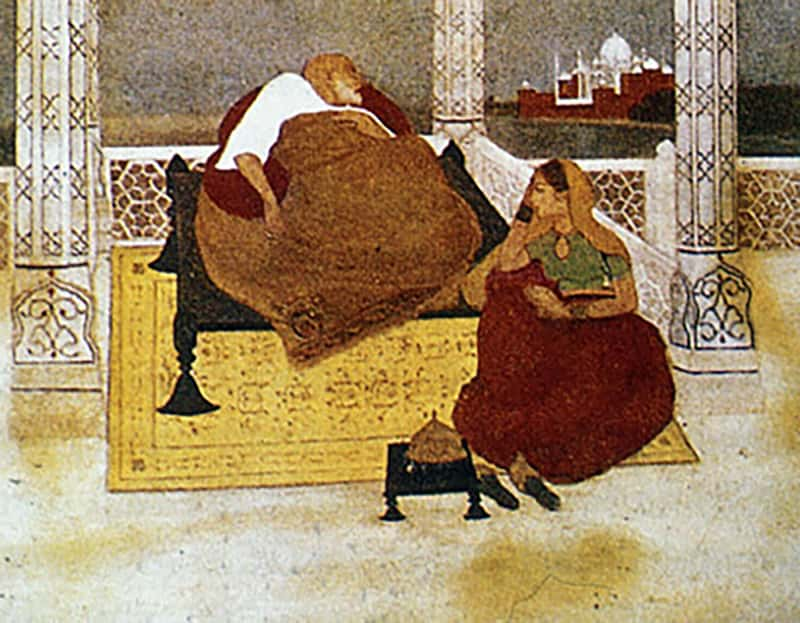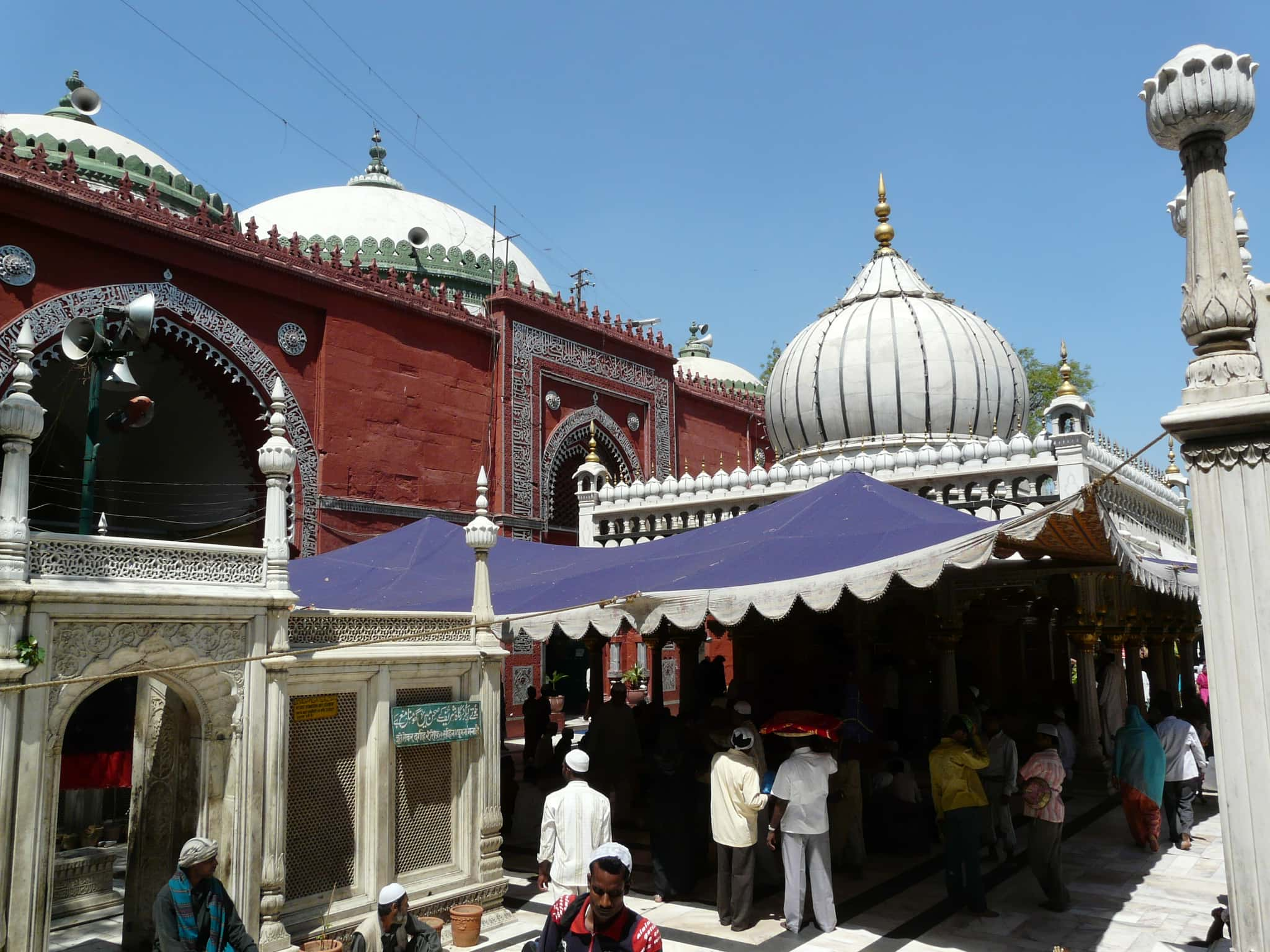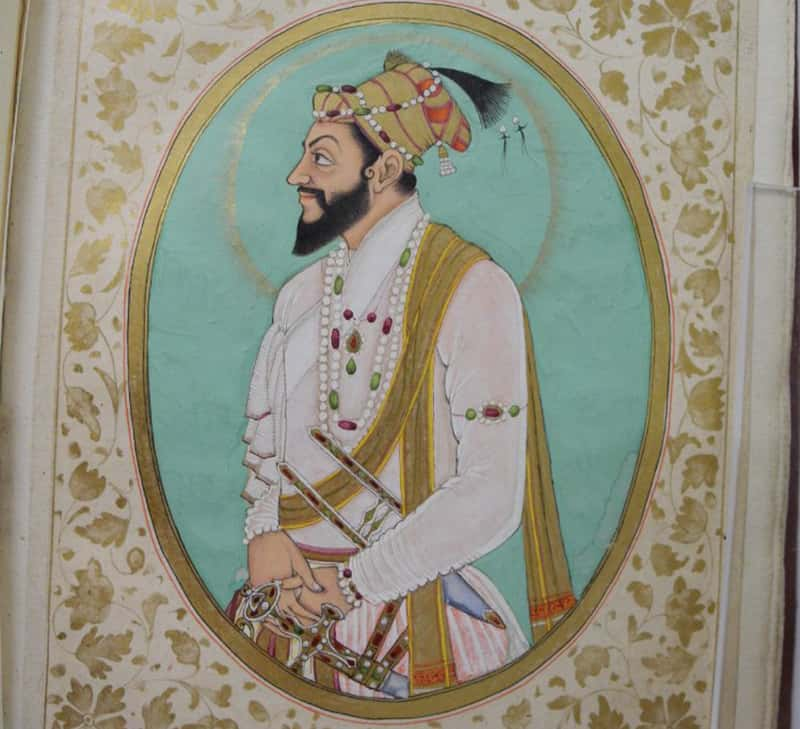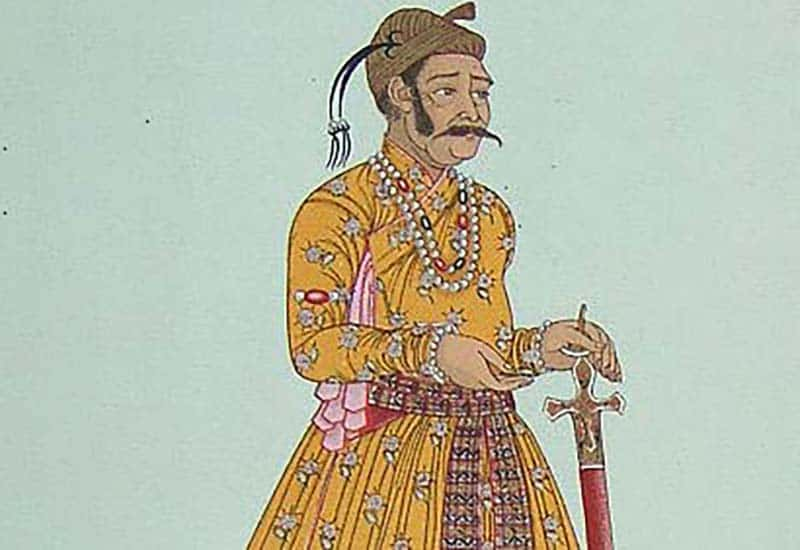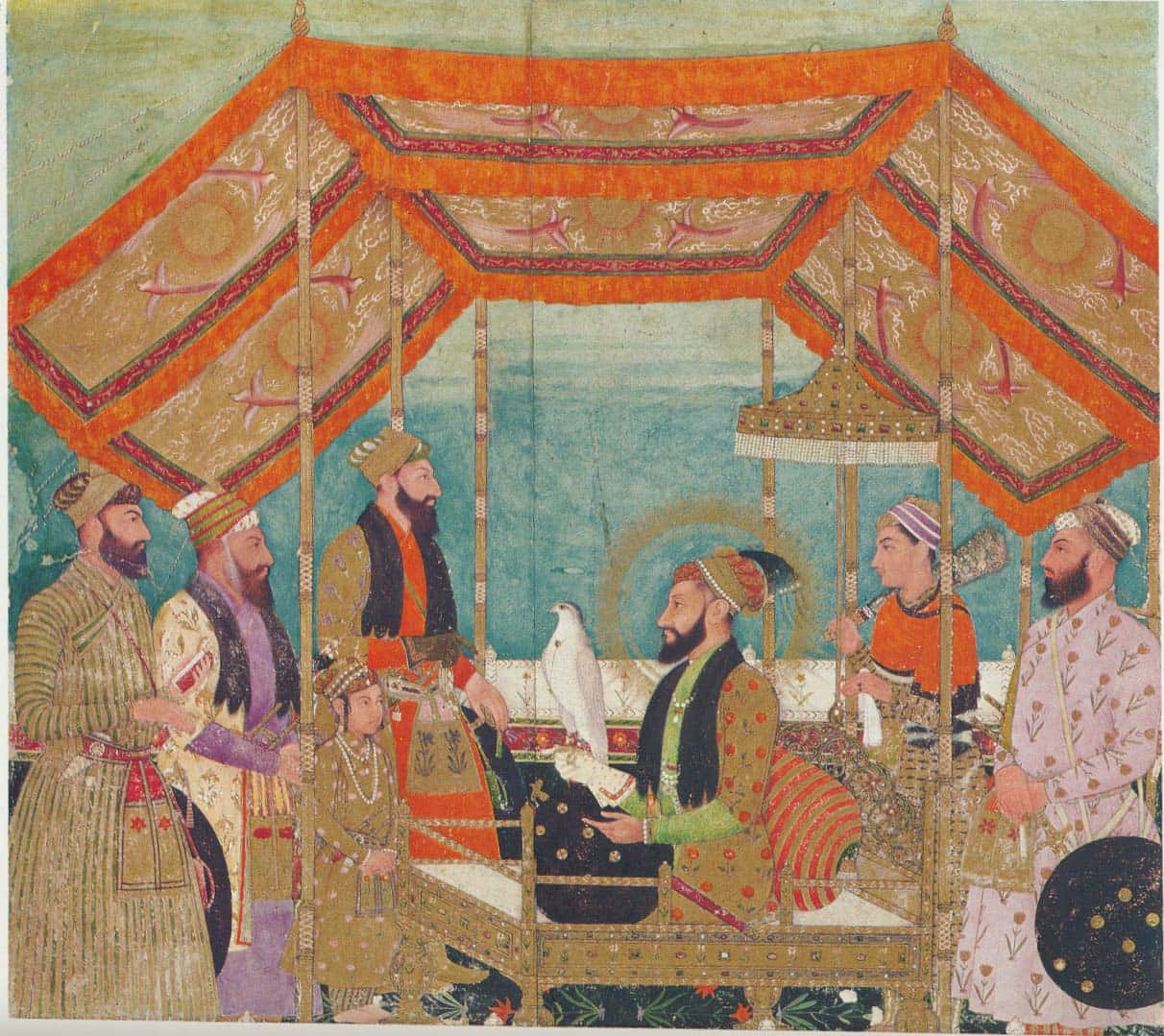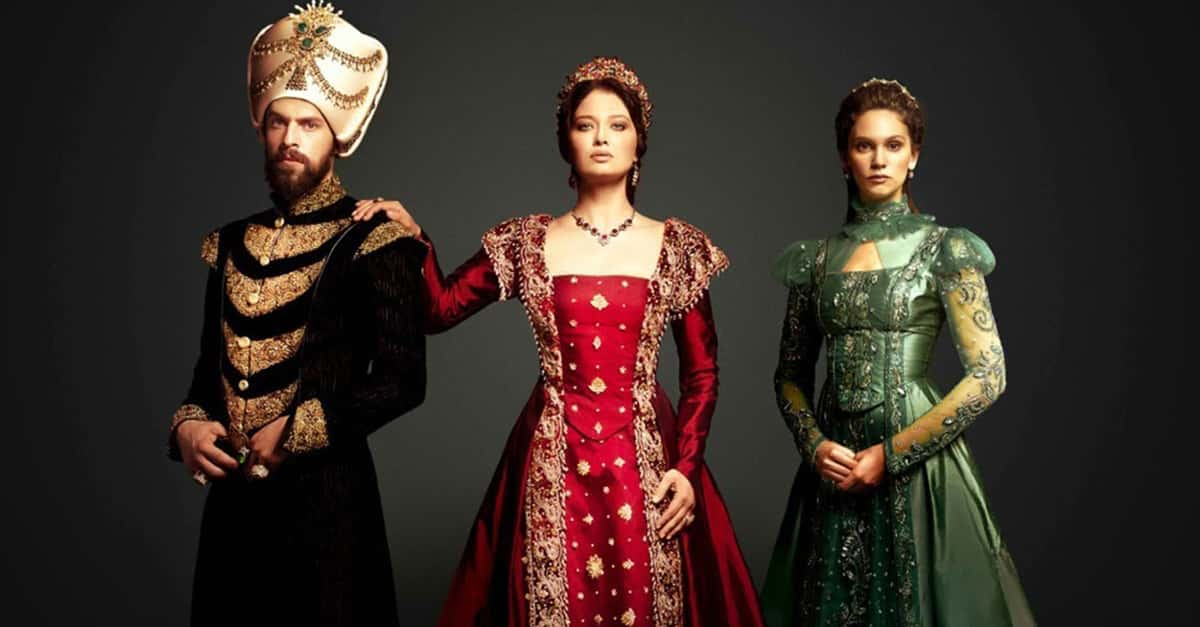A Masterpiece Built From Grief
“The world believes it was built by love but reading Shah Jahan’s own words on the Taj, one could say it was grief that built the Taj Mahal and it was sorrow that saw it through sixteen years till completion.”―Aysha Taryam, The Opposite of Indifference: A Collection of Commentaries.
Mumtaz Mahal was born in Agra, India in 1593 and was the inspiration for the Taj Mahal, one of the seven wonders of the world. She was a princess born to Persian nobility and became Empress Consort of India in 1612 when she was married to Prince Khurrum (Shah Jahan). Their marriage became one of the greatest love stories of all time and she became a favorite subject of poets.
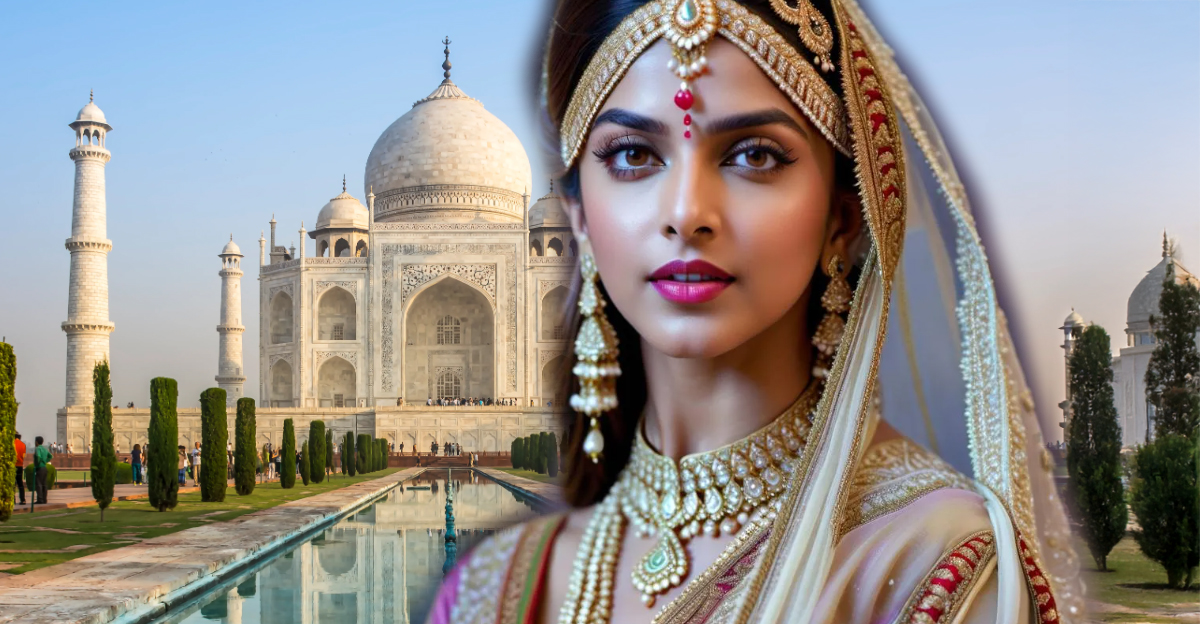
Factinate Video of the Day
42. Chosen One
As the story goes, Mahal was such a beauty that then Prince Khurrum fell in love with her at first sight and they were engaged when she was just 14 and he 15. Although Mahal was the third wife of Shah Jahan, she was said to be his favorite. He gave her the name Mumtaz Mahal meaning “Chosen one of the Palace” or “Jewel of the Palace.” She was born Arjumand Banu Begum.
41. Political Ties
Mahal’s grandfather was the fourth emperor’s chief minister—a position which yielded a lot of power. Thanks to this power, her father Asaf Kahan, rose in rank to Grand Vizier and his sister Noor Jahan became a powerful empress. I’d say they both made out pretty well!
40. The Opportune time
The date of Mahal’s marriage was carefully chosen by court astrologers as the one that would be most effective in ensuring a happy marriage. Superstition or not, they obviously picked right, because their marriage lasted 19 years and she apparently reciprocated his affections.
39. The Last Princess
During their marriage, Mahal gave birth to 14 children, eight sons, and six daughters. Just seven of them survived to adulthood, but that wasn’t a bad number for the time. Sadly, she died of complications from the delivery of her 14th child Princess Gauhara Begum at the age of 37. Her daughter, however, did survive and lived for 75 years before finally dying of natural causes.
38. Deep Mourning
When Mahal died, Shah Jahan was heartbroken and grief-stricken over her loss. He went into deep mourning for a period of two years, during which he called on artisans from all over the Muslim world to design a monument that would declare his love for her. 22 years later, the Taj Mahal was finished. How romantic is that!
37. Jahangir's Empress
Mahal’s aunt Nur Jahan was the 20th and favorite wife of Jahangir, Shah Jahan’s father, but was only stepmother, not natural mother, to Jahan. She quickly became the true power behind the throne, and not only gave her own family members important positions—she married her daughter from her first marriage to Jahangir’s fourth son—she arranged for Shah Jahan, a third son, to ascend to the throne, brought her niece Muzmet Mahal to court, and eventually arranged her marriage to the future Emperor.
36. Divine Intervention
17-year-old Princess Jahanara was apparently so distressed by her mother’s difficult labor that she started giving gems to the poor in hopes of earning some divine intervention. Seeing as her mother died from postpartum hemorrhage after childbirth, I guess it didn’t work!
35. Trusted Advisor
Beauty wasn’t Mahal’s only quality. She was a compassionate person who became Jahan’s trusted companion and advisor, and she steered him towards justice and mercy in his rulings.

History's most fascinating stories and darkest secrets, delivered to your inbox daily.
34. May the Best Son Win
In the Mughal Empire, the firstborn son didn’t automatically get to be ruler when his father passed away. It was pretty much a free for all, and depending on how many wives the Emperor had, there could be some pretty stiff competition. Nu Jahan manipulated the situation to make sure that her own son-in-law could take power, but this kind of ticked off Prince Khurrum, who enlisted the help of his Uncle to lead a revolt against him. Just in case that didn’t work, he also had the rest of his stepbrothers executed for insurance.
33. Plain Grave
Muslim law dictates that graves cannot be elaborately decorated as it is considered to be an expression of vanity which is not allowed. In keeping with the law, Mahal’s grave inside the Taj Mahal is the only part of the mausoleum that is relatively plain.
32. Keeping the Seal
While at court, Mumtaz Mahal was given the responsibility of keeping the seal of the land or the Mehr Uzaz. This was the highest honor anyone could be granted, and by all accounts, she deserved it. She was fluent in Arabic and Persian and was admired by both nobles and officials for her nobility. These qualities definitely paved the way for her engagement to Shah Jahan and he got no arguments from his father at all.
 Taj Mahal: A Monument of Love(2003), Star Entertainment English
Taj Mahal: A Monument of Love(2003), Star Entertainment English
31. Temporary Resting Place
When Mahal died, she was temporarily buried in Burhanpur in a garden known as Zainbad. A garden wasn’t exactly a horrible final resting place, but it was never intended as such. Six months later, he had her exhumed and returned to Agra. Not long after, planning on the Taj Mahal began.
30. Stepping Up
Upon her mother’s death, Mahal’s eldest daughter Jahanara Begum stepped up and took her mother’s place at court at the age of 17. She took responsibility for caring for her younger brothers and sisters, and not only helped her father out of his grief but brought the court back to normal.
29. Four Promises
On her deathbed, Mahal supposedly requested four promises from her husband. First was that he build a monument dedicated to their love. Second was that he marry again. Third was to be kind to their children, and fourth to visit the tomb on the anniversary of her death. He was definitely able to keep the first two promises. He might have tried to be nice to the kids, but since his son ousted him from power, that was probably harder than it seemed. As for the fourth, that’s never been recorded, so we can only imagine that he at least tried.
 Taj Mahal: A Monument of Love(2003), Star Entertainment English
Taj Mahal: A Monument of Love(2003), Star Entertainment English
28. Contest for the Throne
In September 1657, Shah Jahan became gravely ill. Figuring that he was ready to croak, his sons started battling each other for the throne. The Battle of Samugarh, as it’s known, was fought between his third son Aurangzeb Bakhsh and his eldest son Dara Shikoh. Dara was a pretty modern guy, but Aurangzeb clung to the old, traditional values. Historians now suggest that the battle was one of the most important in India’s history, and represented a major tipping point for the country.
27. Off Center
The Taj Mahal was designed to be perfectly symmetrical, but there is one exception to the structure’s seemingly perfect lines. While Mahal’s casket lies in the exact center of the crypt, Shah Jahan’s casket, which was placed there after the building’s completion, throws everything off by being west of center. To be fair, the place wasn’t intended to hold both of them, so how could they know?
26. Royal Wives
While he was waiting to marry Mumtaz, Prince Khurram married his first wife Princess Kandahari Begum from Persia. He had a daughter with her, and then married a second princess and had a child with her. After her Mumtaz’s death, he reportedly married twice more to Akbarabadi Mahal and Muti Begum, but neither were love matches, and the weddings were entirely for political reasons.
25. Unfit to Rule
At the end of The Battle of Samugarh, Aurangzeb was victorious over his brother and declared himself emperor. Likely to the surprise of his sons, Shah Jahan recovered, but that didn’t matter to Aurangzeb who declared him unfit to rule and made him a prisoner in the citadel of Agra to ensure he couldn’t come back into power. He also apparently tossed his sister Jahanara in there with him, mostly because she wanted to stay with her father and take care of him. At least he had some company!
24. Protected for Eternity
When the Taj Mahal was built, extra care was taken to make sure that should the building ever collapse—and this was a real possibility at the time—the four 130 foot spires at the edge of the platform were placed so that they’d lean outwards and fall away from the crypt, not on it. Do your worst, Mother Nature!
23. A Crowded Resting Place
When Shah Jahan died, Aurangzeb put him in a sandalwood coffin and had him buried beside his wife in the Taj Mahal. This might sound totally romantic, but the Taj Mahal was not designed to hold two people. It was Jahan’s son Aurangzeb who decided not to bother building a separate monument for his father and to bury him beside Mahal. On the bright side, he gets to spend eternity beside her!
22. Mourning From Afar
For the final eight years or so of his life, Shah Jahan was unable to set foot in the Taj Mahal to visit his wife and was only able to look at it from his prison. How tragic!
21. Religious Tolerance
The Mughal Empire ruled India and Pakistan for most of the 16th and 17th centuries, spreading the practice of Islam throughout South Asia. Prior to the Mughal rule, the country was mostly Hindu, but until Shah Jahan’s son Aurangzeb began his rule, their goal was to unify the country and integrate, not quash the Hindu religion.
19. Peacock Throne
As a ruler, Shah Jahan was pretty good for his country, and he was known for having a passion for building. One of his biggest claims to glory—other than the Taj Mahal—was the construction of the Peacock Throne, which is one of the most magnificent thrones ever made. Silver steps led up to the throne, the feet were made of gold and set with jewels, and the back was a representation of two peacock tails lined with rubies and diamonds and other precious stones. Believe it or not, the throne is said to have cost twice as much as the Taj Mahal—which cost a pretty penny—and took seven years to build. Even more amazing is that it was supposedly just one of seven bejeweled thrones in the Red Fort Complex, which was basically his palace. Now that’s indulgent!
18. Unseen Beauty
Although Mumtaz Mahal is described as a beauty, there are no paintings of her in existence. The Muslim "Law of the Veil" meant that women had to keep their faces covered at all times in public, so royal women would never have been depicted in a painting. Any painting that does have her name on it is most likely a representation of Mughal beauty in general, but it most definitely is not her.
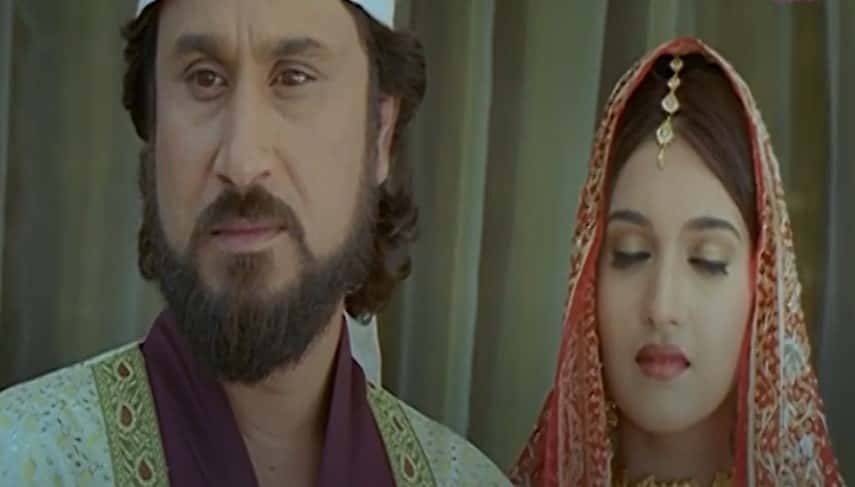 Taj Mahal: A Monument of Love(2003), Star Entertainment English
Taj Mahal: A Monument of Love(2003), Star Entertainment English
17. Extraordinary Ancestry
Shah Jahan had some pretty notable ancestors. On his mother’s side, he was descended from the Mongol ruler Genghis Khan, and on his father’s side, he was descended from the Turkish barbarian Tamerlane. In fact, the term Mughal is derived from Mongol, which is why the terms sound so similar.
16. Mastermind to Accession
Mumtaz Mahal was known for her intelligence, and her daughters were no slouches either. Her second daughter Roshanara Begum who became a powerful figure in her brother Aurangzeb’s court when he took the throne. During the power struggle for the throne, she warned Aurangzeb of a plot by her older brother Dara and her father to kill him and remove him as a threat to the throne. Had Aurangzeb not been victorious, things most likely wouldn’t have turned out so well for her, but since he was, she pretty much became the most powerful woman in the empire.
15. Off With His Head!
After Aurangzeb’s ascension, Princess Roshanara was just a tad bit concerned about what her brother Dara might do to her for helping Aurangzeb, so she came up with a tidy solution. She asked Aurangzeb to execute Dara, which would actually solve a problem for both of them. He thought this was just a grand idea and took it a step further by sending Dara’s head to his father. That’ll definitely send a message.
14. All Because of an Elephant
One wouldn’t think that an elephant could be responsible for changing the course of history, but that’s exactly what happened in the Battle of Samugarh. Not being especially brilliant in military strategy, Dara chose to dismount his elephant at a crucial point in the battle. The elephant, not being stupid, and not wanting to die, fled the battle, causing Dara’s troops to think he’d been killed and that the battle was over. Definitely not the brightest thing he could have done.
13. Hopelessly Devoted
From the first moment of their marriage to her death, Mahal and Jahan were pretty much inseparable. She traveled with him on all military campaigns, even while heavily pregnant with their 14th child, which ultimately resulted in her death. That’s definitely devotion!
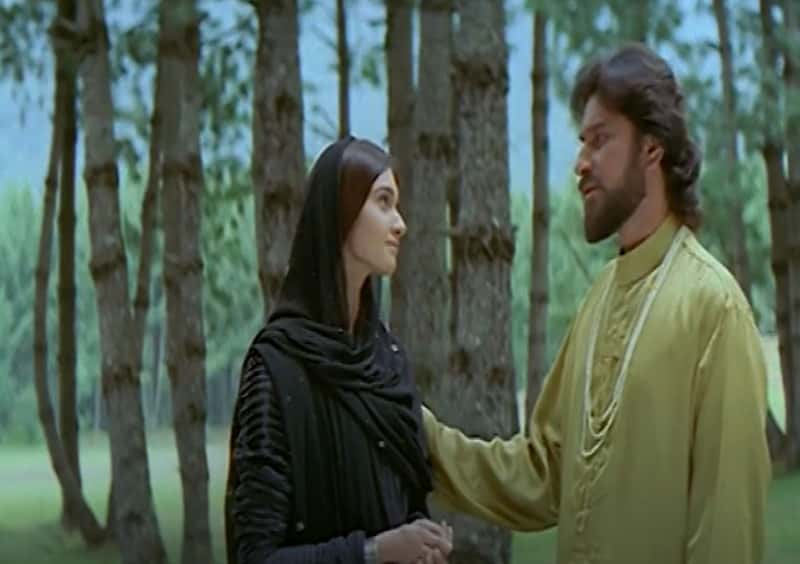 Taj Mahal: A Monument of Love(2003), Star Entertainment English
Taj Mahal: A Monument of Love(2003), Star Entertainment English
12. Shop Girl
Before meeting the Prince, Mahal had a shop in the Meena Bazar where she sold glass beads and silks. The market was attached to the Emperor’s harem, where she was in perfect position to be spotted by the Emperor’s son. Their meeting wasn’t entirely a fluke, but there were no guarantees he would fall for her.
 Taj Mahal: A Monument of Love(2003), Star Entertainment English
Taj Mahal: A Monument of Love(2003), Star Entertainment English
11. Private Residence
Inside Shah Jahan’s Red Fort Complex was the Khan Mahal which he had constructed to be used as his private residence. As with most structures that Jahan built, this was also an architecturally beautiful building, and the interior contains an important piece of Mughal art. At the northern end of the sitting room is a marble screen with scales of justice suspended over a crescent surrounded by stars and clouds. The building was started in 1639 and completed in 1648 at a cost of about 50,000 rupees. Not quite as expensive as the Taj Mahal, but not exactly a cheap sum at the time.
10. Wayward Princess
Unlike her reputedly pious mother, Roshanara was a bit more… shall we say…promiscuous? Princesses at the time were required to stay single, but that didn’t stop her from taking a bunch of lovers. This did not sit well with her extremely conservative brother, and to make matters worse, his wives were getting pretty ticked off at how she was controlling his harem. Enough was enough and he stripped her of her power and banished her to live out her life in her garden palace in Delhi. This move probably appeased his wives, but it didn’t really impact her too much as she continued to have her lovers visit her at her palace.
9. Suicide or Murder
According to some historical accounts, when Aurangzeb discovered Roshanara with yet another lover in her garden palace, he finally reached his breaking point with her and had her and her lover poisoned. There is some question as to whether or not her death was actually his doing, or whether she and her lover took the poison themselves. Aurangzeb was known to be quite partial to his sister, so some historians don’t believe he would have killed her. He also had her buried in the Roshanara Bergh, a garden which she commissioned, which doesn’t seem like the act of a guy who just had his sister murdered.
8. Defying Stereotypes
Jahanara Begum was the ultimate feminist princess and unlike any other Mughal princess of her time. She was well-educated and became known for her knowledge of the Qur’an and Persian literature. She also knew how to play chess and played often with her father. Unlike the other women of the time, she did not hang around her father’s harem, and she was even allowed to live in her own palace outside of the Red Fort. No wonder she took over running things when her mother died!
7. Following the Path
Sufism is the Islamic belief and practice of seeking divine love and knowledge through their connection to God. Jahanara Begum and Dara Shikoh were followers of the practice, the former being a Sufi Scholar. Had the rules allowed, there is speculation that her spiritual mentor Mullah Shah Badakhsh would have named her his successor, but her book Risālah-i-Sāhibīyah was based on his life.
6. Monument of Gratitude
In 1644, just after her 30th birthday, Jahanara was seriously burnt when her clothes caught fire. The court physicians were unable to heal her, but a begger named Hanum was. Later that year, she went on a pilgrimage to Khwaja Moinuddin Chishti’s shrine in Ajmer, and within a year, she was healed completely. As a display of her gratitude, she built a marble pavilion for the shrine known as Begumi Salam and wrote Chisti’s biography, which received critical acclaim.
5. Dividing the Property
Mumtaz Mahal died a very wealthy woman and left behind a fortune of about 10 million rupees which was divided amongst her children. Half of the property went to eldest daughter Jahanara, including the responsibility of the royal seal.
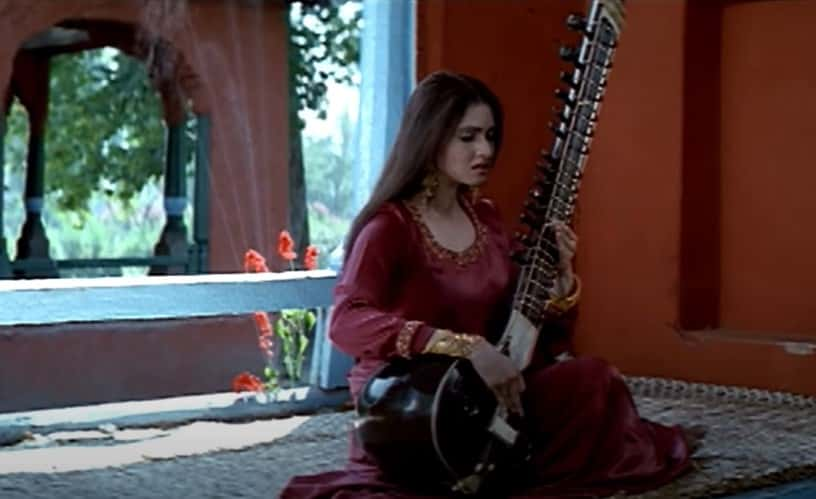 Taj Mahal: A Monument of Love(2003), Star Entertainment English
Taj Mahal: A Monument of Love(2003), Star Entertainment English
4. Premature Crowning
Mahal and Jahan’s second son Shuja was a pretty power-hungry guy and being Governor of Bengal just wasn’t enough for him. He tried multiple times throughout his life to seize power, the first during the illness of his father when he prematurely declared himself Emperor. This didn’t exactly sit well with his older brother Dara or younger brother and third son Aurangzeb who were also battling for the throne. Aurangzeb promptly sent his captain Mir Jumla to make him submit, so his self-proclaimed victory didn’t last long.
3. Try, Try Again
You’ve got to give credit to Shuja that he wasn’t one to give up easily, even after being defeated by both of his brothers. In 1659, he marched into the capital against Aurangzeb who was now Emperor and was defeated again in the battle of Khajawa. After his defeat, he fled to Bengal, but Aurangzeb’s imperial army chased him there and defeated him in yet another battle in 1660.
2. Traitorous Son
The youngest son of Mahal and Jahan was Murad Bakhsh, and like his brothers, he also thought he had an entitlement to his father’s throne and proclaimed himself emperor during his illness. The thing about Murad, however, was that he wasn’t the brightest of the bunch and trusted the wrong guy. Murad joined forces with Aurangzeb against Dara in the war of succession, agreeing that they would split the kingdom between them. Of course, Aurangzeb had no intention of sharing, and he invited his brother to a feast, got him drunk, and imprisoned him for three years before executing him in 1661. He really should have known better.
1. What Goes Around Comes Around
Aurangzeb amazingly managed to rule India for 49 years but following the pattern of the bloody successions in Mughal history, another war of succession that came after his death. Aurangzeb never officially declared a crown prince (not that it would likely have mattered anyway), leaving his three sons to battle it out for the throne. Azam Shah was the oldest and figured he was the most entitled, so he battled his younger brother Bahadur Shah for the throne. This was a pretty boneheaded move since Bahadur had already tried multiple times to overthrow his father while he was alive. Meanwhile, youngest son Kam Bakhsh established his own empire in Bijapur. Bahadur Shah defeated both of his brothers and became the seventh emperor of the Mughal empire.
Sources: 1, 2, 3, 4, 5, 6, 7, 8, 9, 10, 11, 12, 13, 14, 15, 16, 17, 18, 19, 20, 21, 22, 23, 24, 25, 26, 27, 28, 29, 30


